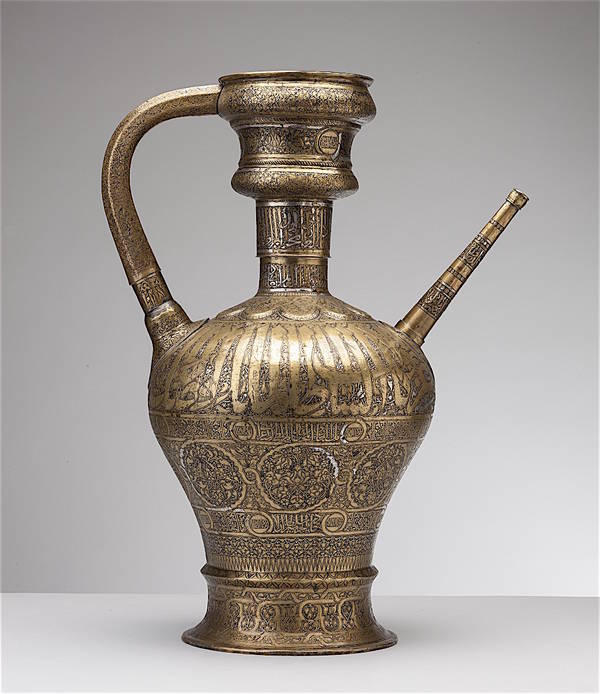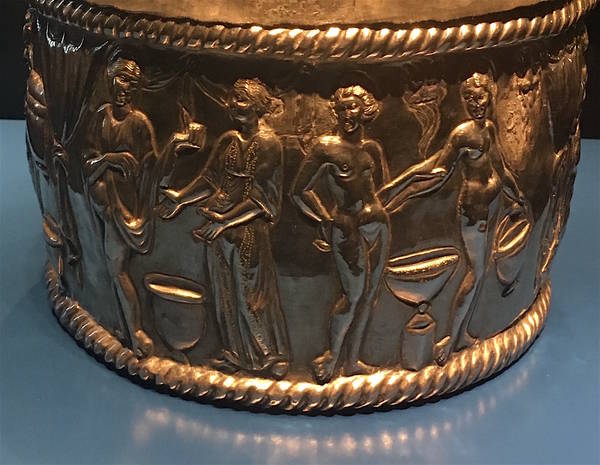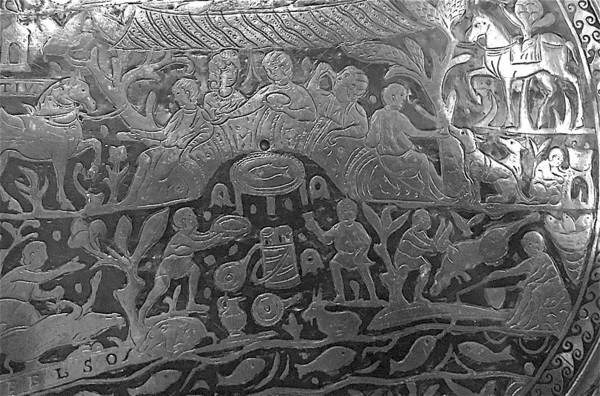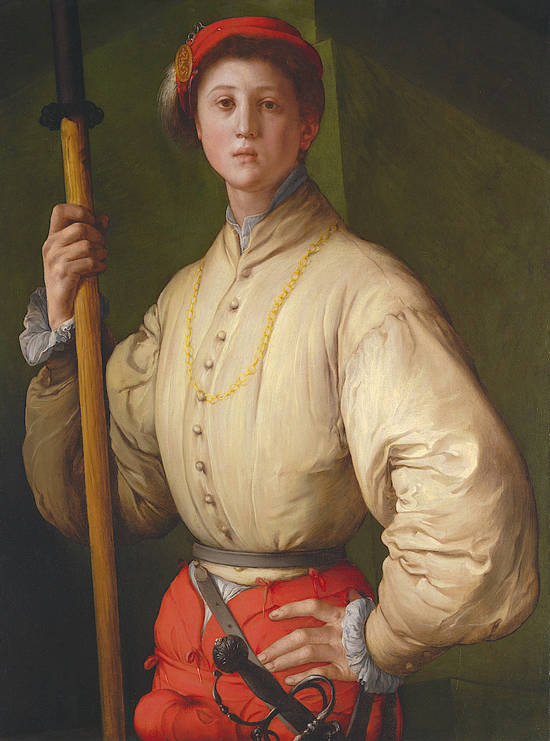
The world of Islamic art has been explored in Florence this summer in a major exhibition (Islamic Art and Florence from the Medici to the 20th century, open until 23rd September), divided between the Uffizi Gallery (the Aula Magliabecchiana exhibition space on the ground floor, so accessible directly from the ticket office) and the Bargello Museum. As is well known, the religion of Islam prohibited cult images and generally speaking all representations of the human form (the only religious element being inscriptions) and so Islamic art consists largely of metalwork, textiles, ceramics, carvings, carpets, all of which we tend to group under the title of ‘decorative arts’, which in terms of 20th-century Western Art History lost ground to the study of painting and sculpture. For those of us ill-versed in the history of Islamic art, perhaps one of the most striking things about this exhibition is the wide date span of objects which have great similarities and stylistic unity, and the occasional difficulty scholars have in identifying not just the region of origin, but even the country. This is also because the works were often made by itinerant craftsmen who were called on to satisfy the trade in luxury items throughout the Islamic world and beyond. Perhaps we have become all too used to looking closely at the dates and birthplaces of the artists when standing in front of a painting or sculpture in Italy.
This is therefore an exhibition to be enjoyed above all for its great variety of beautiful objects, all of them of the highest quality, from the huge geographical area of the Middle East under Islamic rule: Syria and Egypt and the North African coast, as well as Persia, Turkey and Muslim Spain. A feeling of exotic luxury exudes from the wonderful carpets, textiles, velvets, brass-work incised in silver and gold, ivory carvings, tiles, glazed earthenware pottery, glass mosque lamps, etc.
The great majority of works displayed come from Florence itself: from the two major donations made at the turn of the 20th century to the Bargello Museum by Carrand and Franchetti; from the 19th-century collections in the Museo Stefano Bardini and Museo Stibbert; and from the Medici collections now divided into a number of museums in the city. Much of this art is not normally on display, so this has been an occasion to bring these wonderful pieces into the open and delve into the deposits. In particular, part of the Franchetti collection of textiles in the Bargello can at last be seen, and objects from the Museo e Galleria di Palazzo Mozzi Bardini are also on display.
The stuffed giraffe which greets visitors to the Uffizi part of the exhibition has been rescued from the Natural History Museum in Florence: taxidermists were ordered to preserve this extraordinary gift, presented to the Florentine Grand-Duke in 1835 by Ali Pasha, the viceroy of Egypt. It was the successor to another giraffe, sent to Lorenzo the Magnificent in 1487 by the Mamluk sultan of Egypt, and which was once to be seen grazing in the Boboli Gardens. It is known that Lorenzo used to exchange gifts with his contemporaries in Constantinople (Mehmet II) and Cairo (Qa’it Bay). He might even have worn the parade jacket (on show from the Bargello) which bears the name of a Mamluk emir.
The extraordinary flare the Medici family had for collecting beautiful things is once again demonstrated in this show, as well as their ability to ‘enrich’ some precious objects from the East with decorations (it is thought that the handle of Lorenzo’s sardonyx vase from Persia, on display from the Tesoro dei Granduchi in Palazzo Pitti, was designed by Verrocchio). A rock-crystal bottle made in Egypt in the 10th century was given a Renaissance mount and ended up in the treasury of the Medici family church of San Lorenzo. Interestingly enough, there is some brasswork in the exhibition which has not been definitively identified: it could be either Islamic or Florentine. But we know that the precious little coffer with silver and gold damascening, clearly inspired by Islamic art (on loan from the Louvre), was produced in Florence in 1570.
Among the ceramics are five albarello vases decorated with the Florentine heraldic lily, made in Syria in the early 15th century and here re-united from Paris, Toronto and Doha. A large lustreware pitcher made in Valencia (and now preserved in Berlin) bears the Medici arms.
Two large brass basins for ablutions, made in Syria in the late 13th or early 14th century, are displayed together: one is now in Kuwait City but the other, even more beautiful, ended up in Palermo. The exquisite ‘Barberini Vase’ (lent by the Louvre) was once owned by Pope Urban VIII: it was made in the mid-13th century with silver inlay and delicately incised ornament. The pope was evidently unworried about possessing an Islamic artefact.
The Biblioteca Nazionale Centrale in Florence also preserves Islamic documents and manuscripts (and they are holding their own exhibition, Images from the Orient, in conjunction with this one). The Medici even started their own printing press for Oriental scripts. On show at the Uffizi is the Library’s most precious holding of Islamic manuscripts: the earliest known example of ‘The Book of Kings’, the Persian epic poem dating from 1217.
The huge collection of decorative arts which belonged to Louis Carrand (1821–99), an antiques dealer from Lyon, was begun by his father Jean-Baptiste, and since Louis spent much of his life in Florence, he left it to the Bargello (there are plans to open a new Islamic Hall there: Carrand’s collection is considered to be the best of its kind in Italy). On show for this exhibition are assorted objects of great interest from the collection: ivory plaquettes made in the 11th–12th centuries with musicians and dancing figures; an ivory elephant from a chess set thought to have been made in Iraq in the 10th century; brass objects including a large ewer from Egypt (since it is inscribed with the name of a Yemeni Sultan, it can be dated to 1363–77); tiles from Iran and Iznik tiles from Turkey; Ottoman textiles; a 14th-century glass mosque lamp; a bronze inkwell from Persia; a steel helmet in the form of a turban, and much more.
Part of the textile collection left to the Bargello by Giulio Franchetti in 1906 is displayed in the same room. The largest piece is an amazing strip of red velvet covered with gold discs from Tabriz, identified as one of the panni tartarici (loosely defined as ‘Tartar cloth’) documented in Italy as early as 1295, when it is mentioned in the inventory of Boniface VIII’s papal treasury.
On the ground floor of the Bargello there is a selection of the carpets (together with an Ottoman saddle-cloth) from the Museo Stefano Bardini. Bardini’s carpet collection is the largest in Italy, but also on show here are carpets and textiles which he sold and which have ended up outside Italy: the exquisite Mamluk textile fragment in silk lampas with birds and animals is today preserved in the Musée des Tissus in Lyon (purchased from Bardini in 1907). One of the most outstanding carpets is the one which Bardini brought from the Florentine Capponi family and which he sold on to the Metropolitan Museum in New York. It is an Isfahan carpet from central Persia, dating from the late 16th century, with a blue border with birds and a frieze of animals against a red ground around the central medallion, which has people enjoying a banquet (you have to look closely to make them out).
The huge Mamluk carpet (with wonderful scarlet and green colours) made in Cairo in the early 16th century, recognised as the largest in the world, comes from the deposits of the Pitti (understandably not on permanent display there because of its size). For this exhibition it is displayed in the Uffizi.
A small area on the ground floor of the Bargello has been dedicated to a fascinating selection of the Islamic pieces from the incredibly crowded rooms of the Stibbert Museum, including 19th-century art created by craftsmen at work in Stibbert’s own lifetime, which he may have picked up on his travels. The fascinating wood manuscript covers from Persia have figurative scenes: a dragon about to eat a king (although the figure of majesty mysteriously appears again in six more scenes on the same panel), and a procession with musicians, mules and a group of women wearing the burka (in black and white). There are also examples of arms and armour from Mughal India and an Indian Qur’an owned by Stibbert’s grandfather.
In the catalogue to this fascinating exhibition, the Uffizi director Eike Schmidt writes that he sees it as the role of museums not only to preserve the past but also to foster a dialogue with the present in order to encourage the flow of art and culture between worlds that are only apparently distant one from the other.
Reviewed by Alta Macadam, author of Blue Guide Florence.









